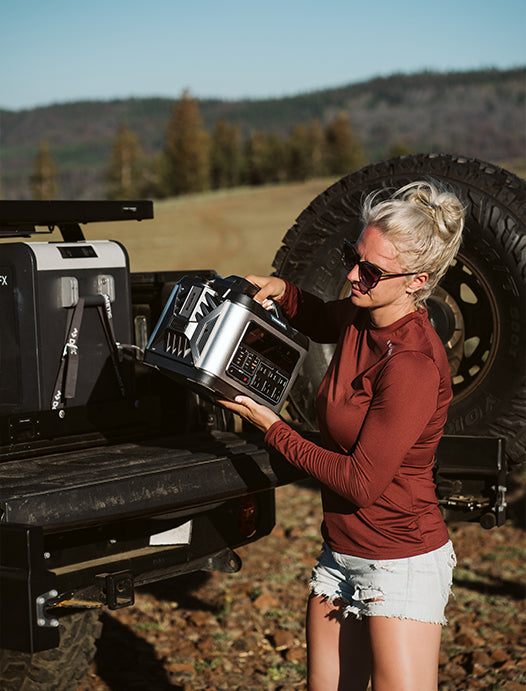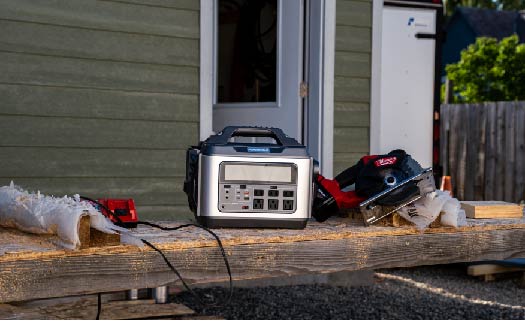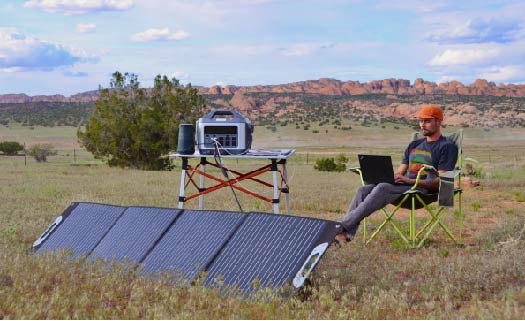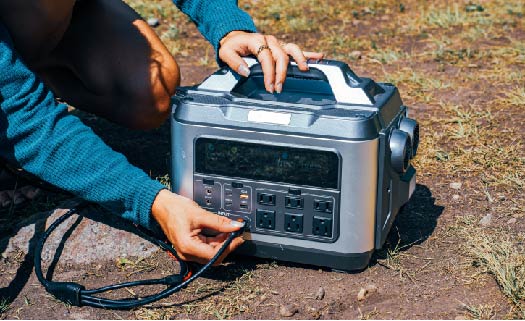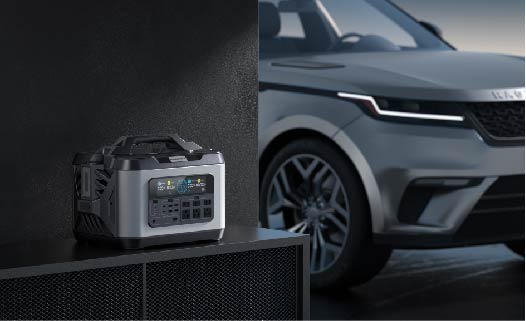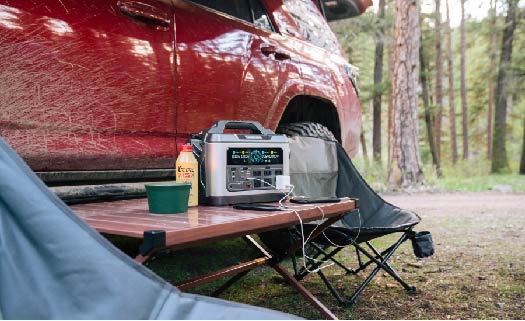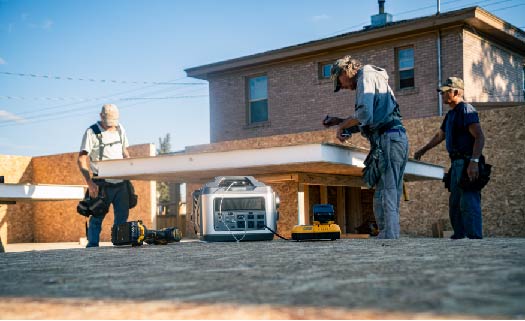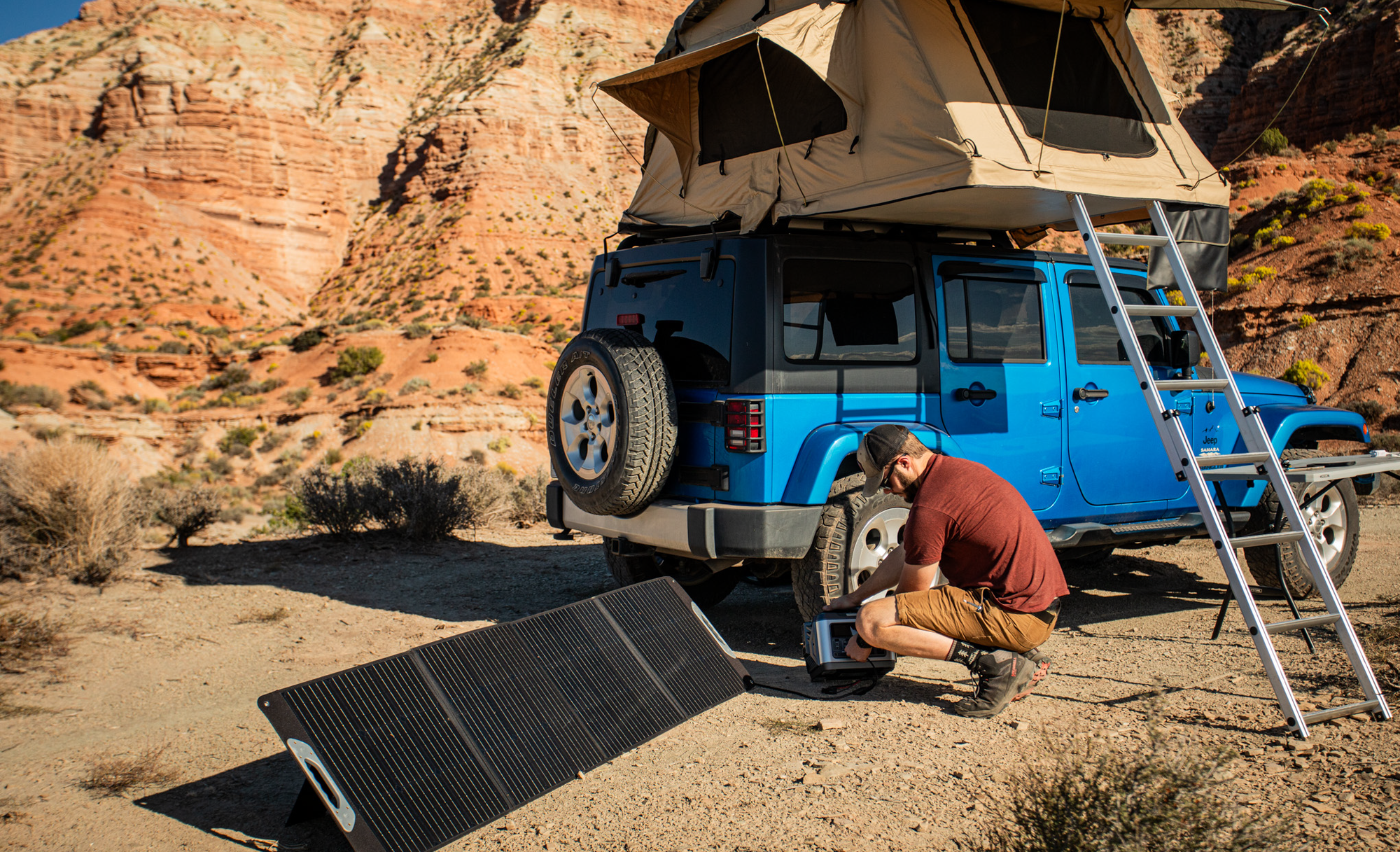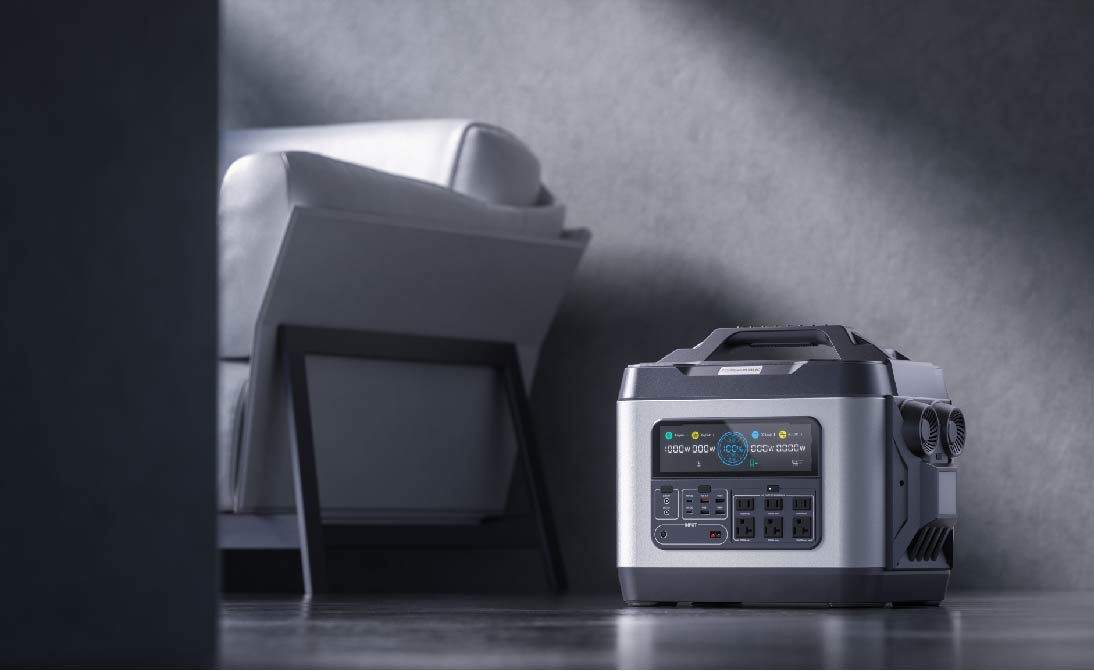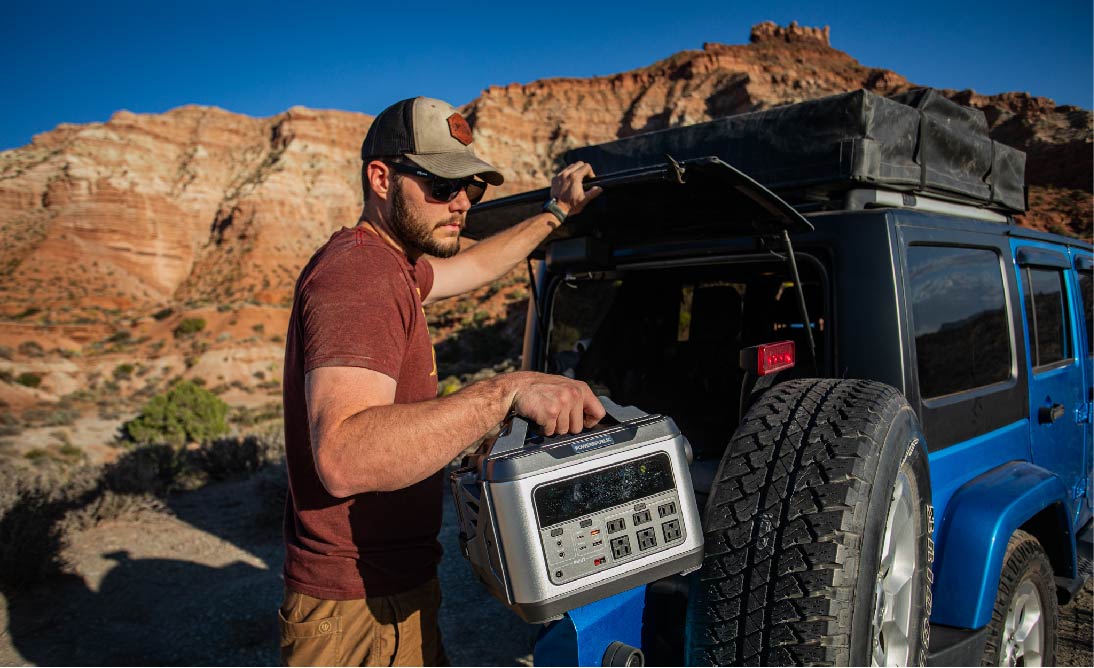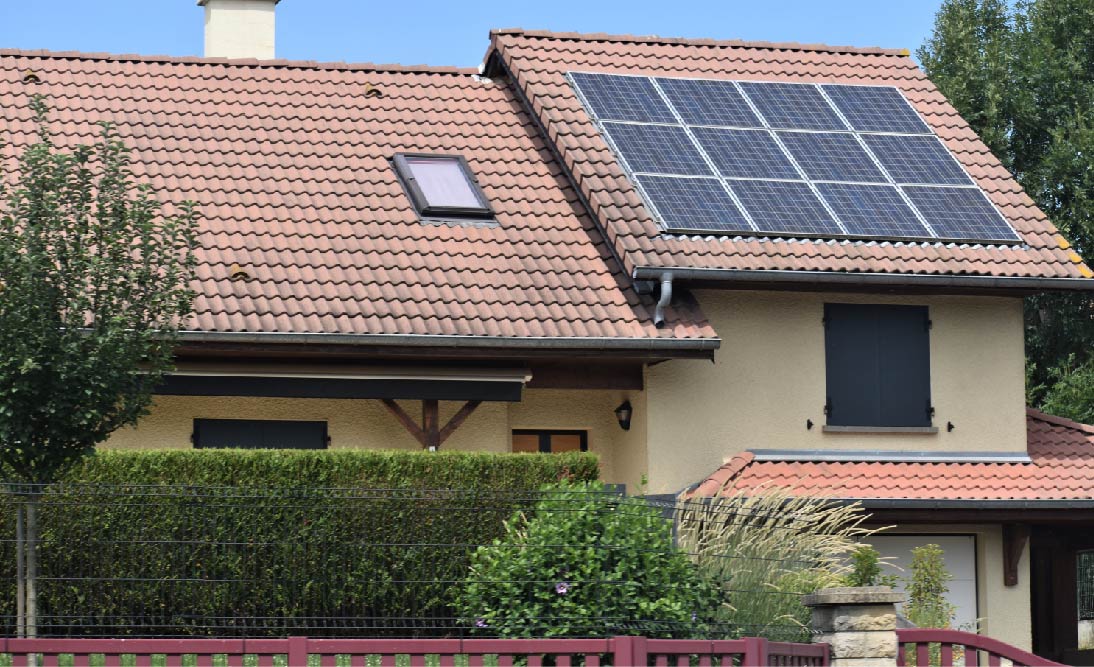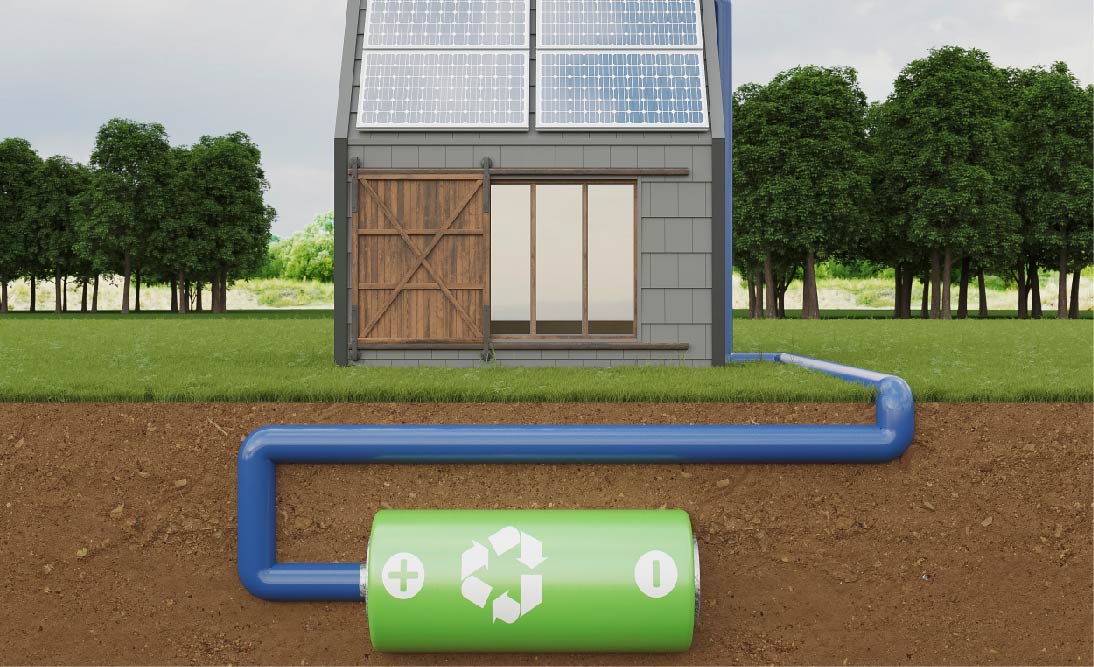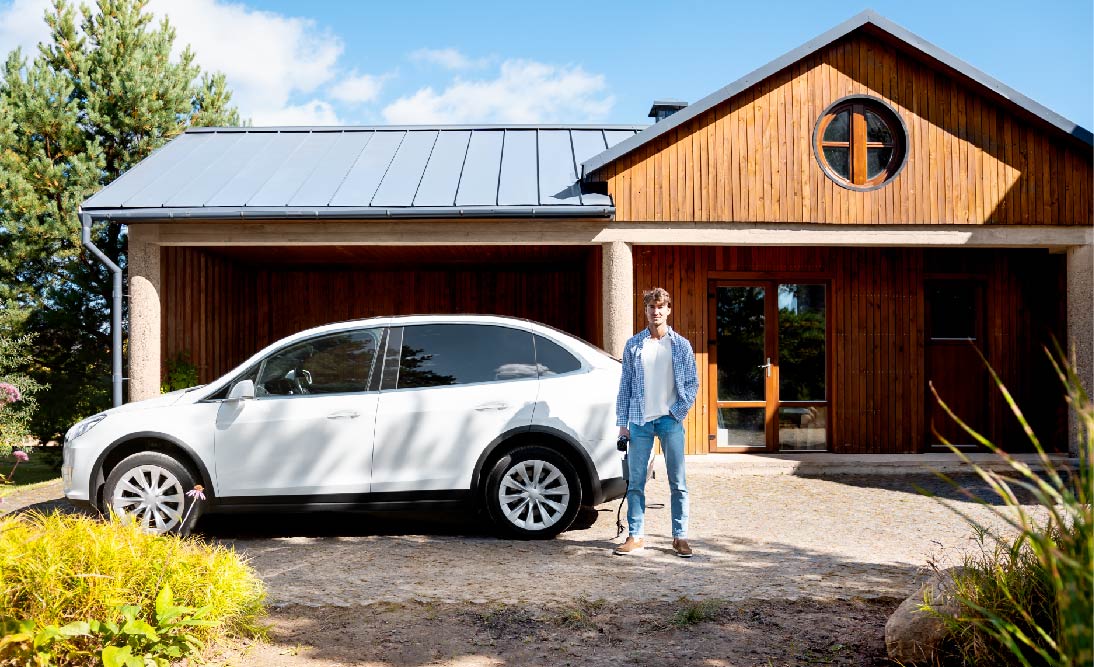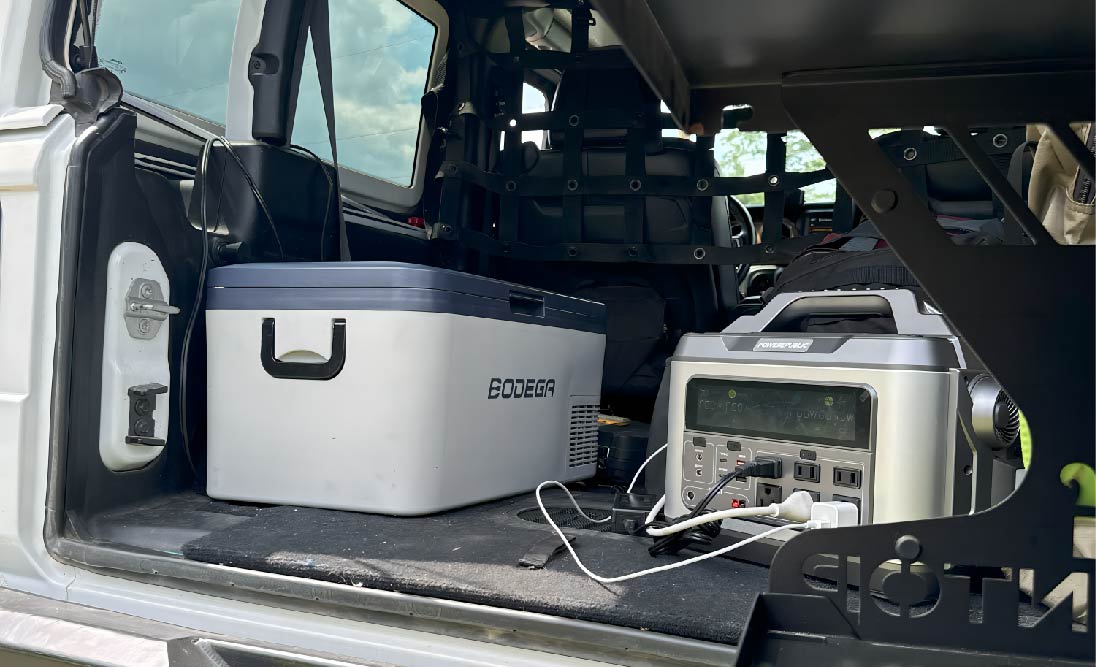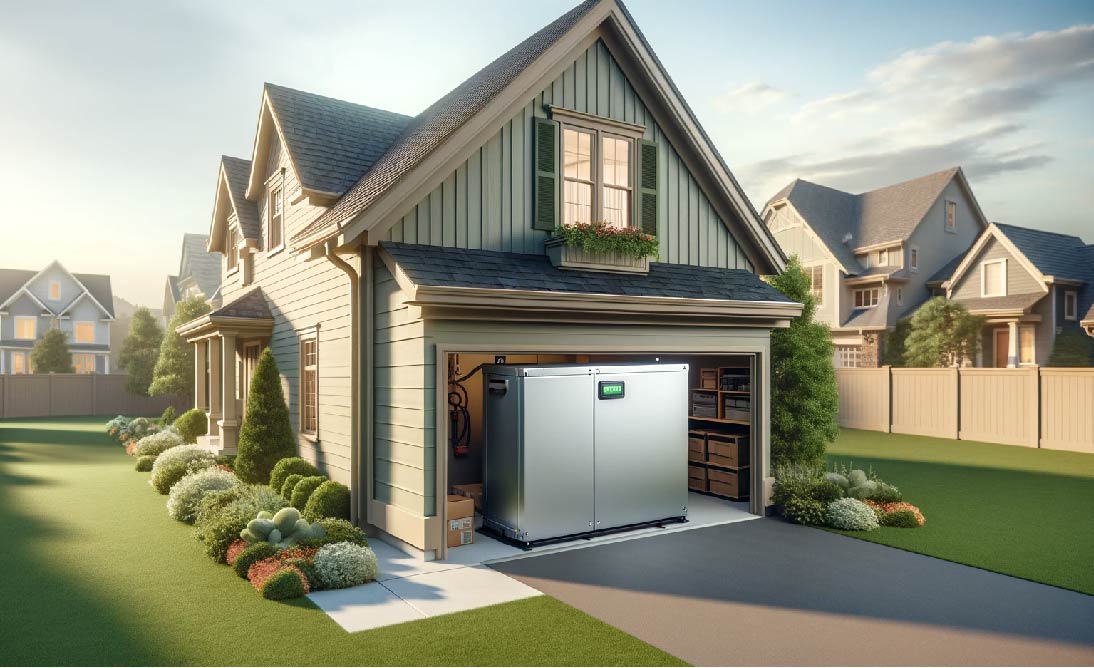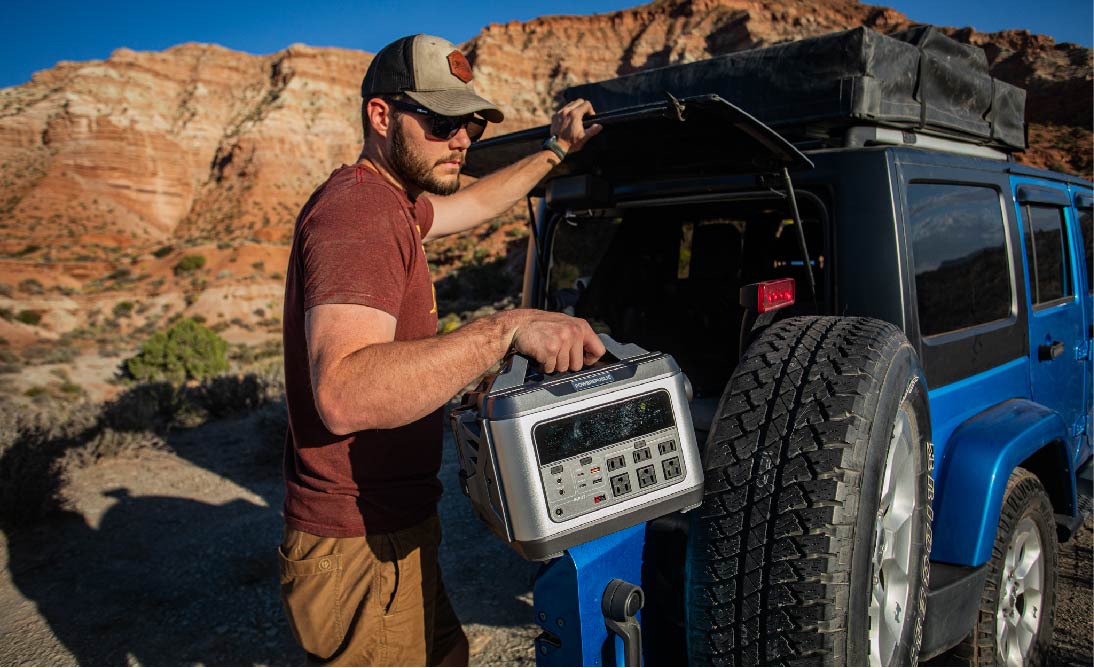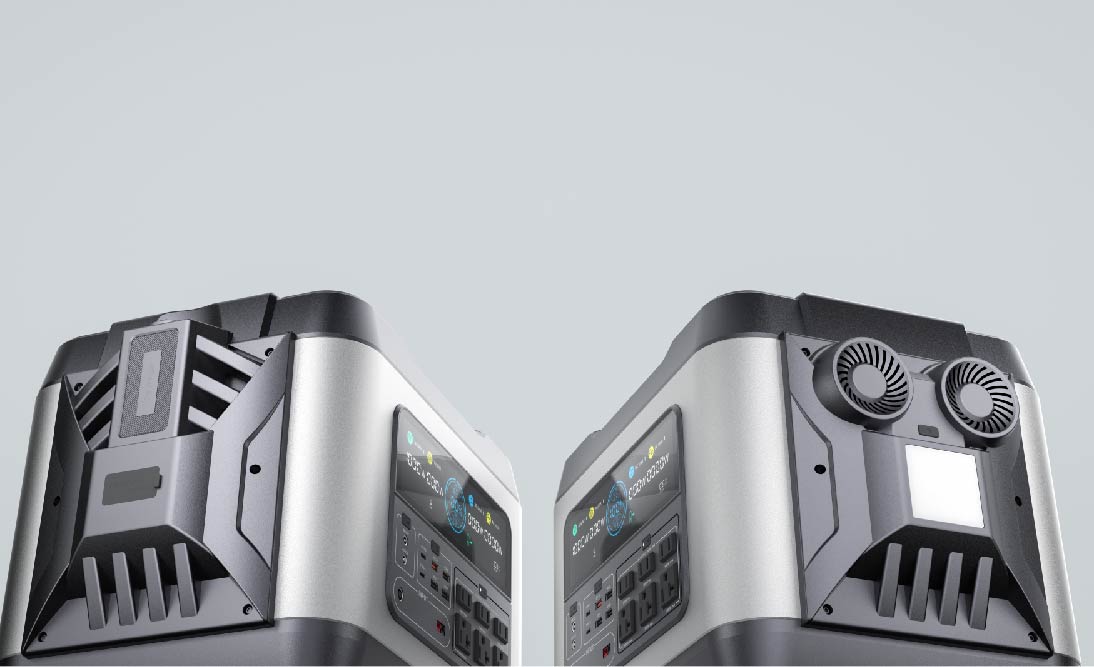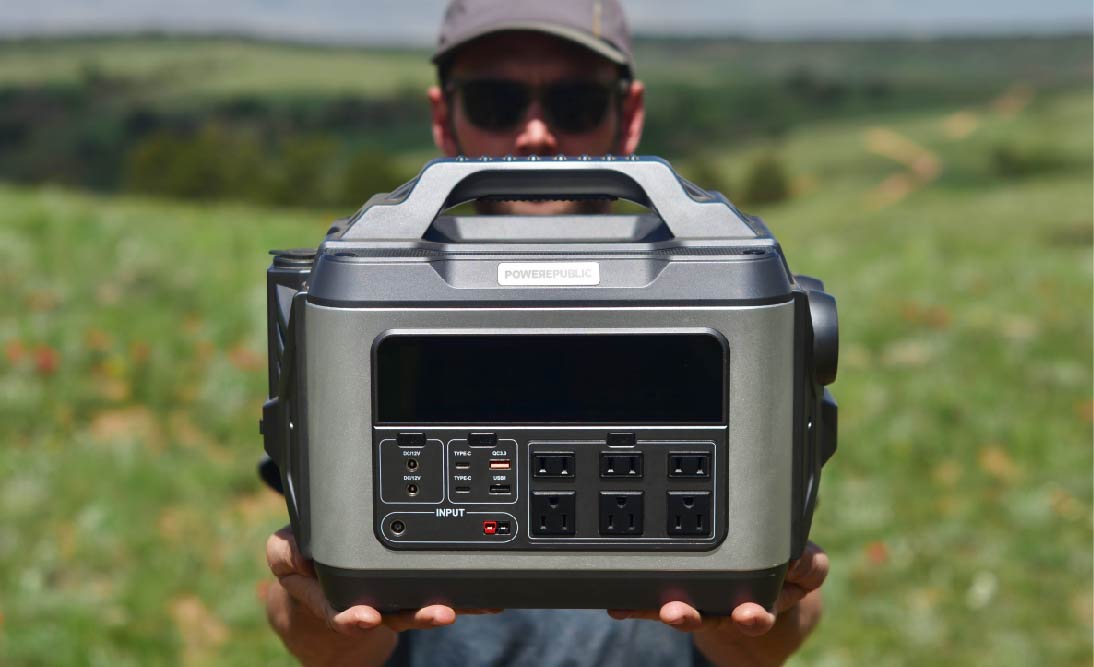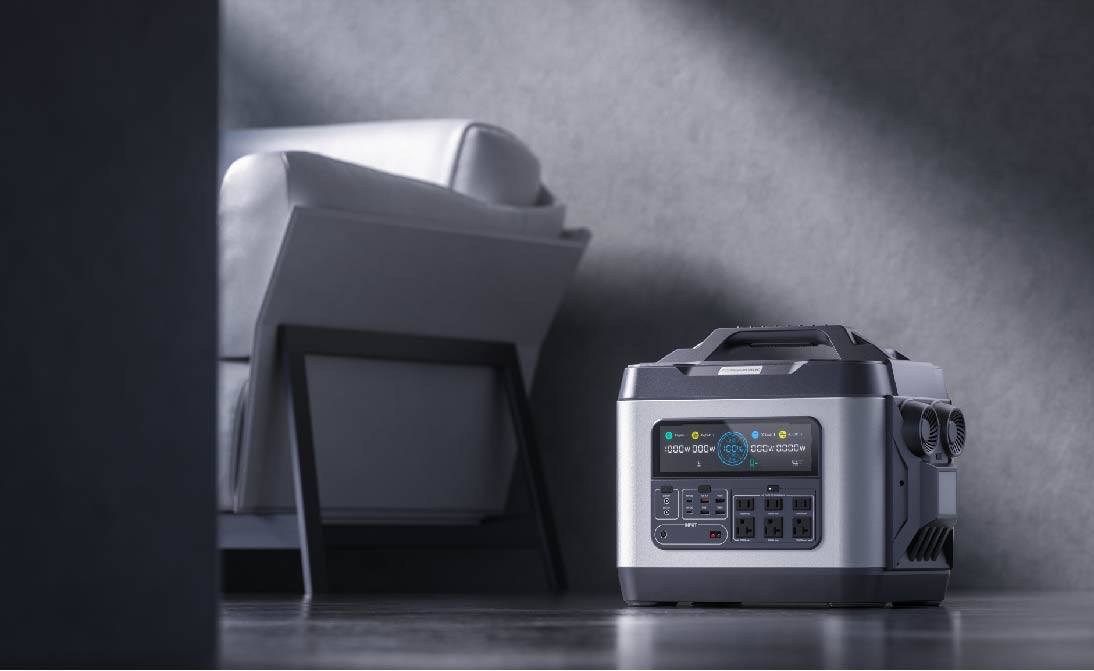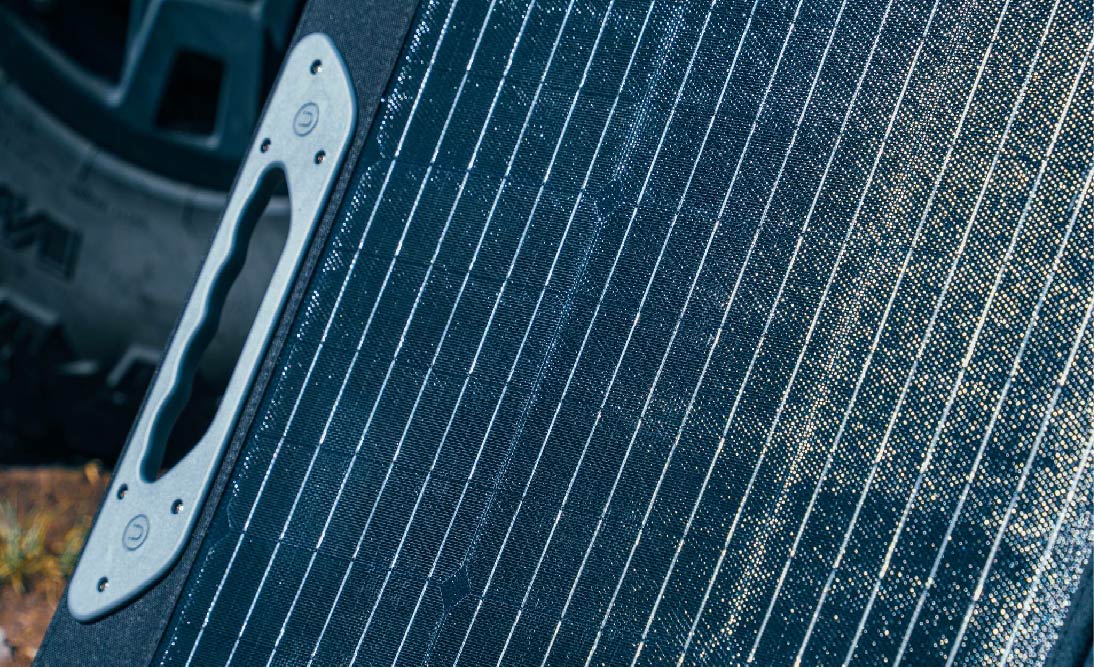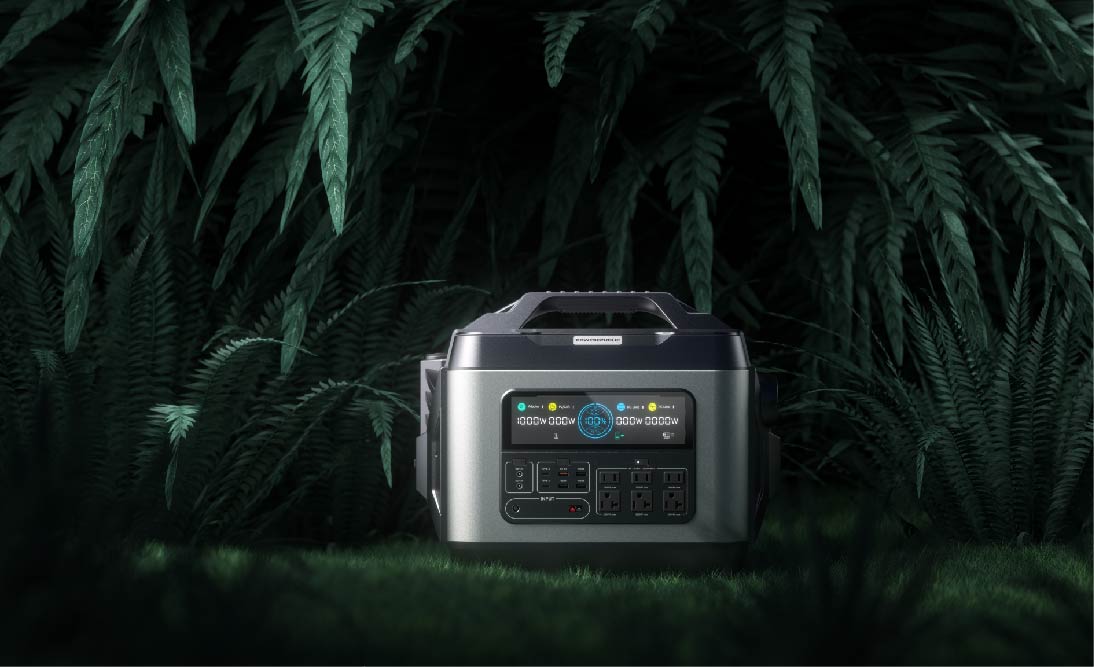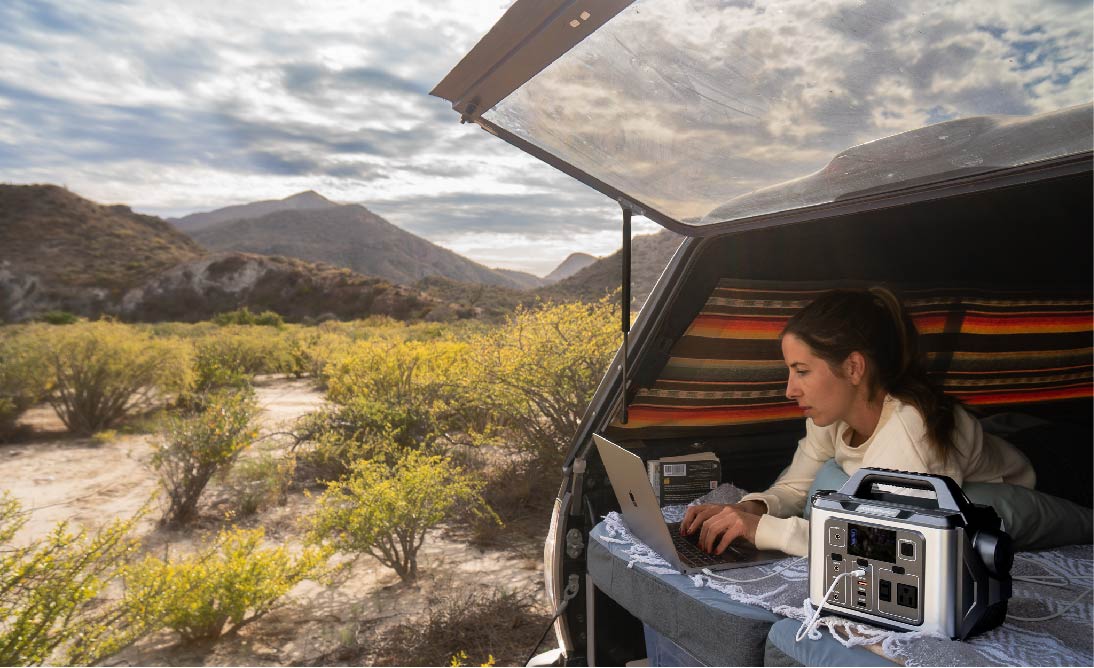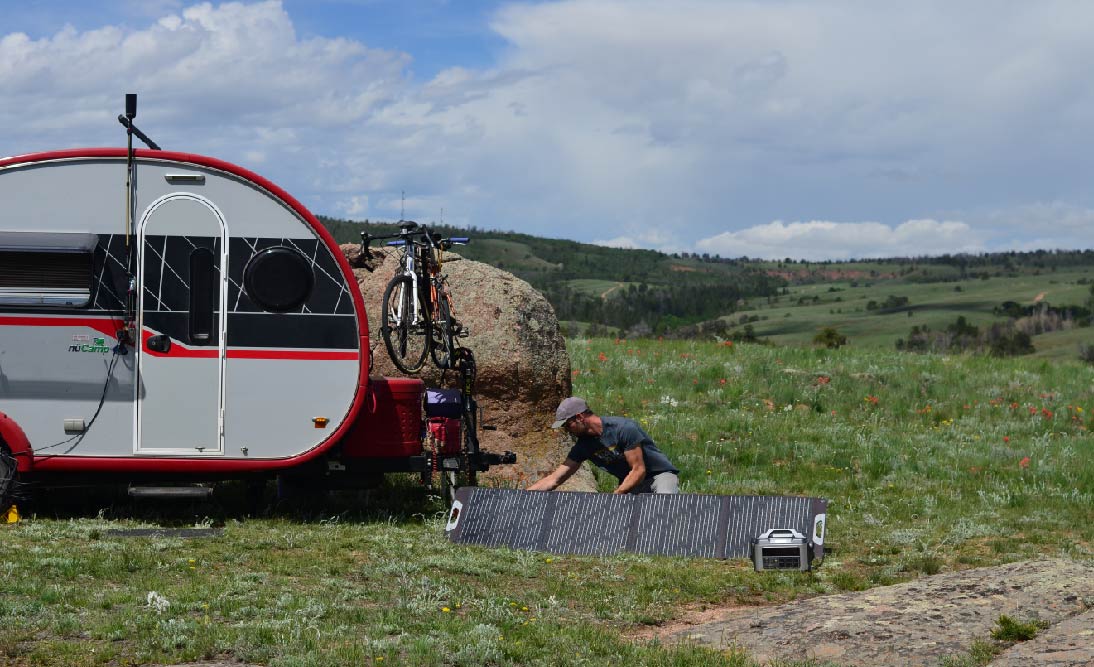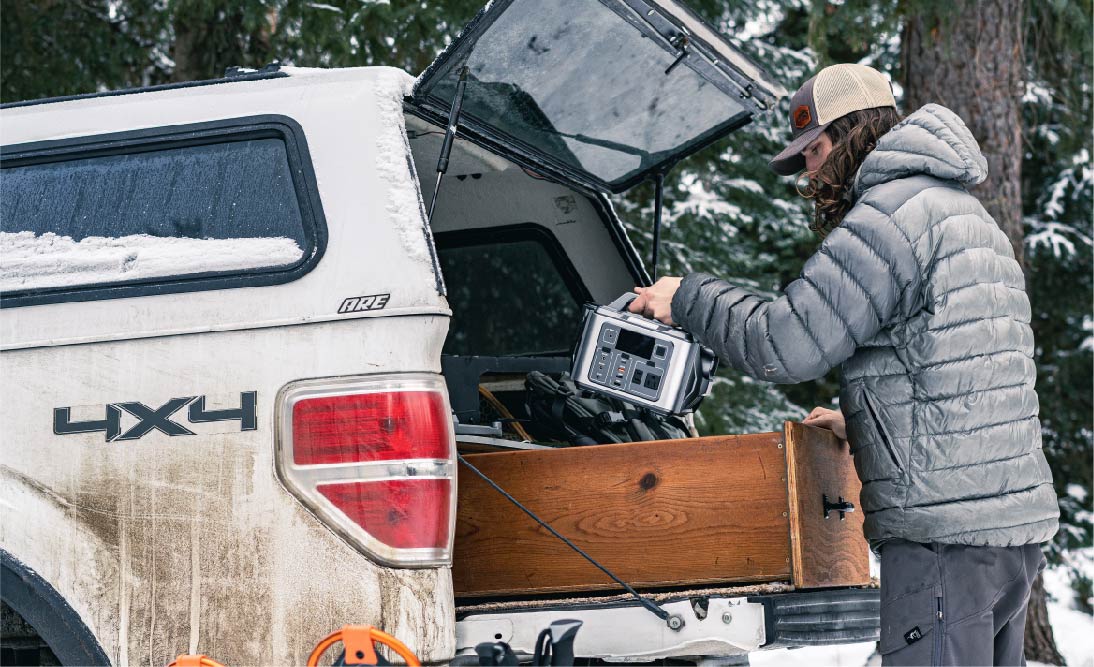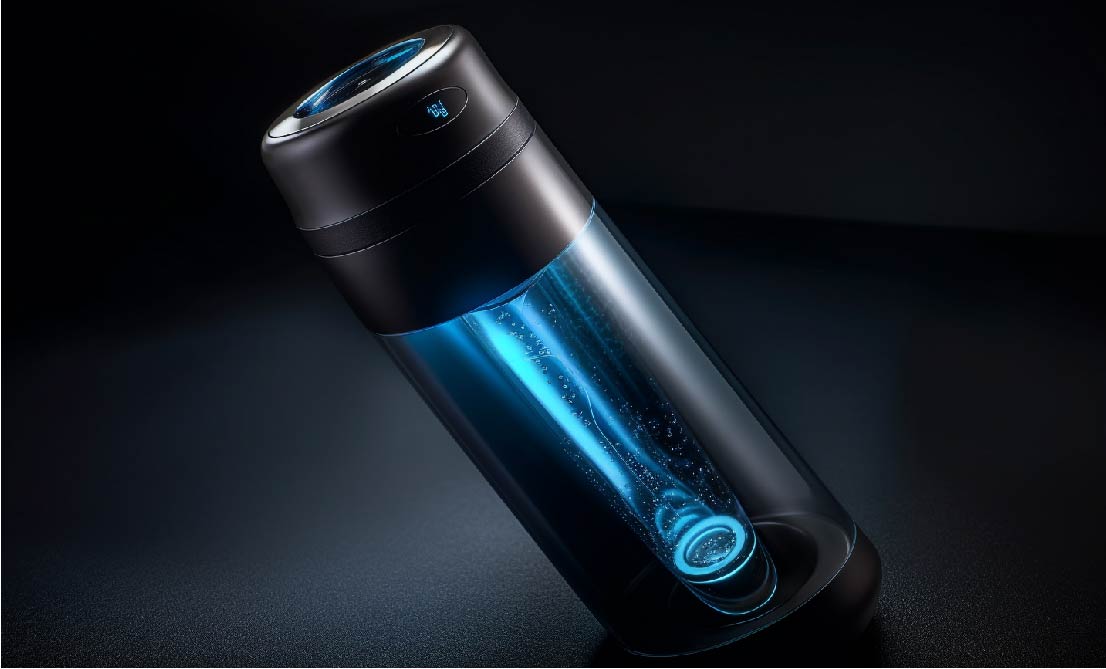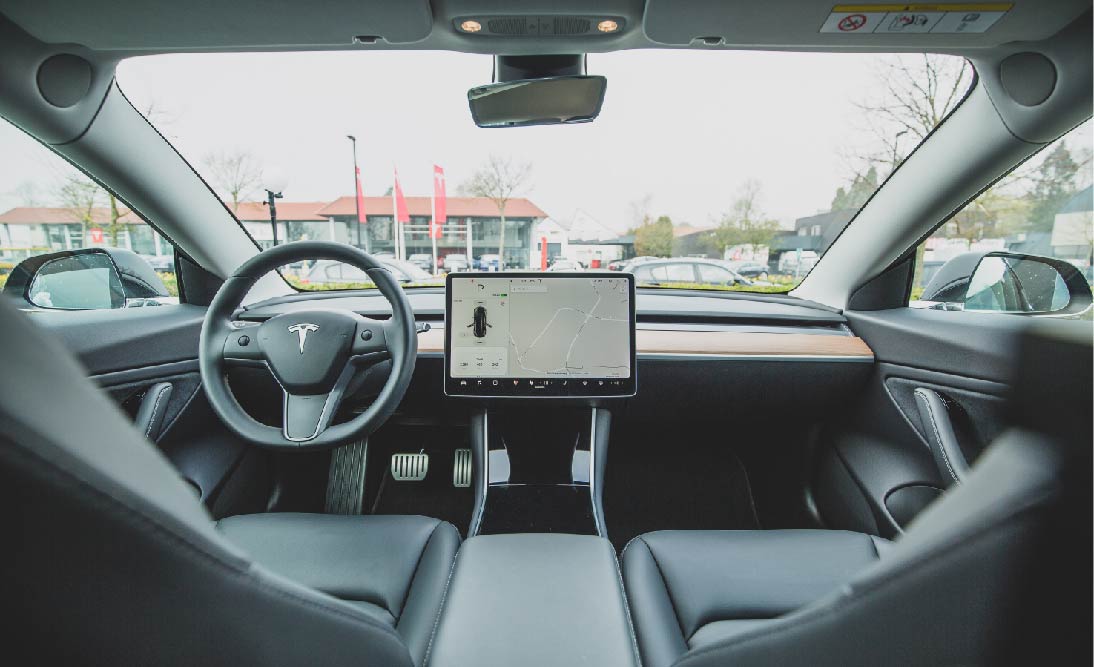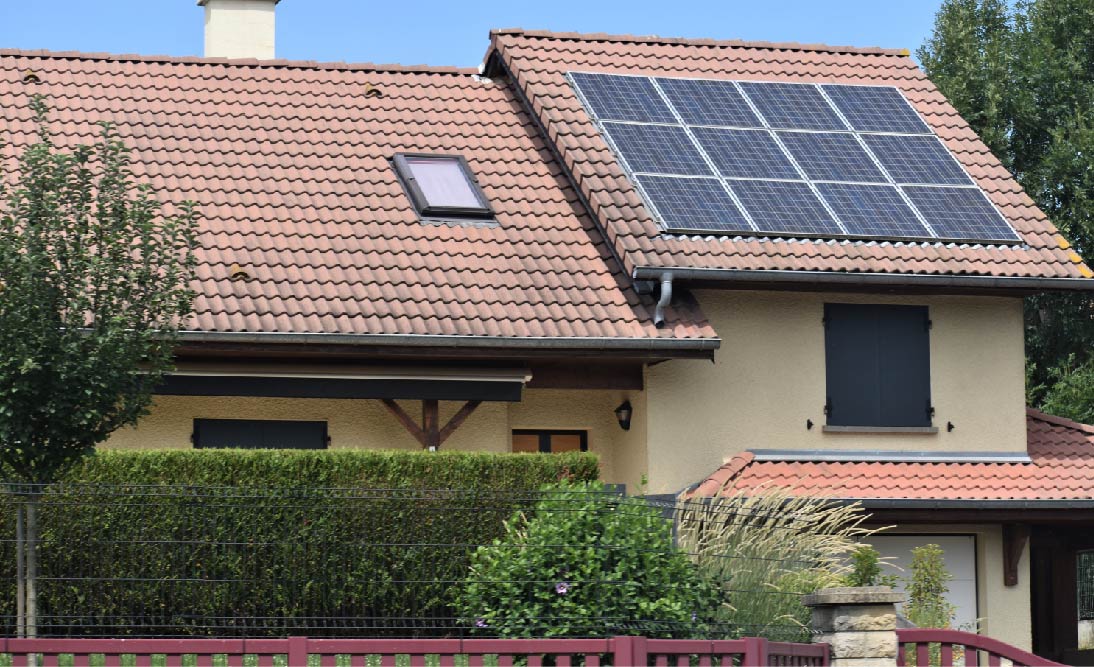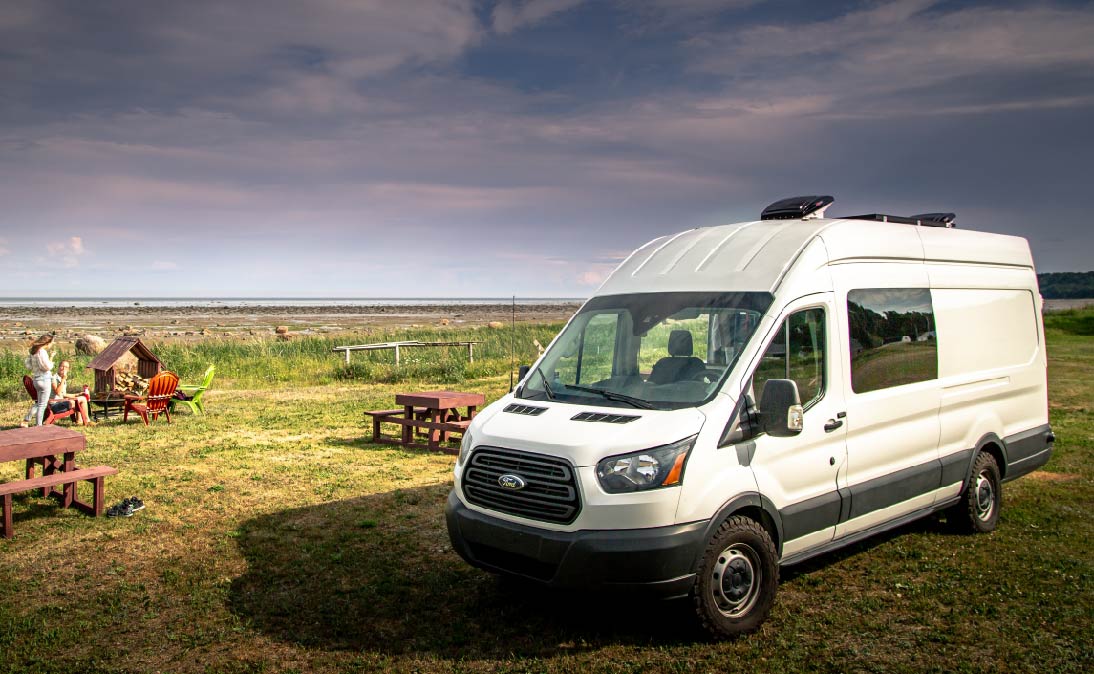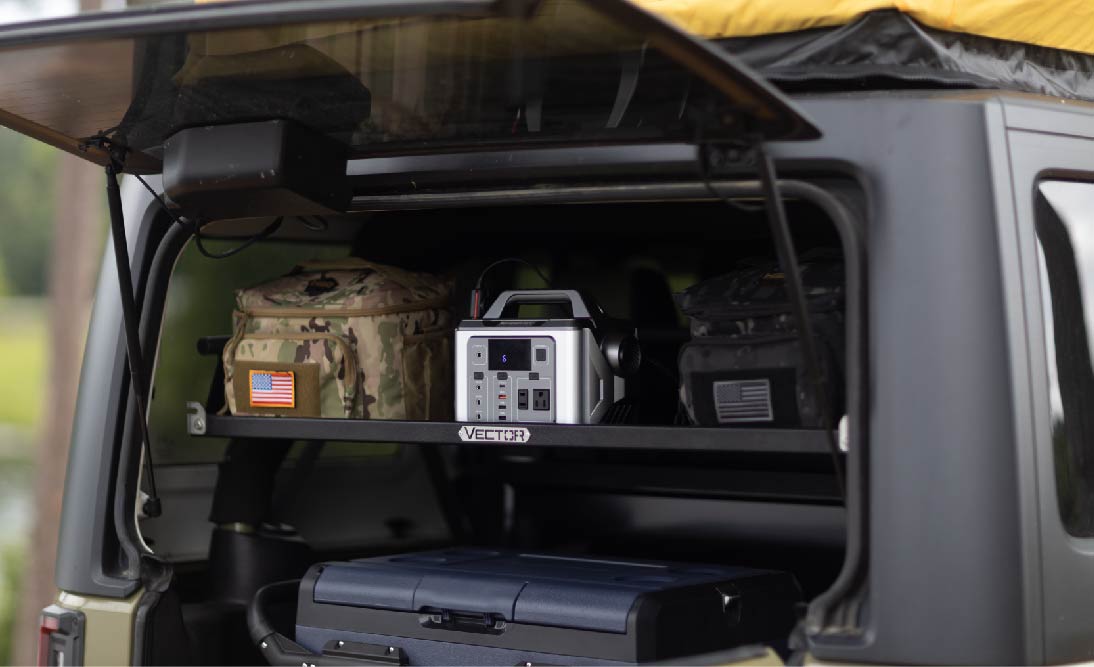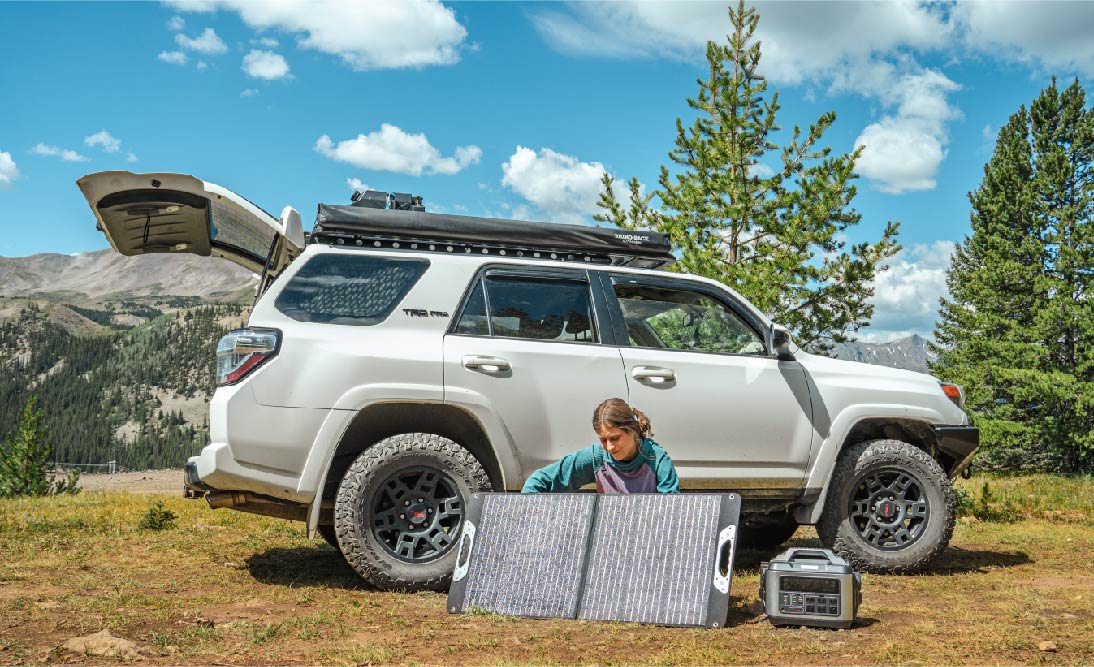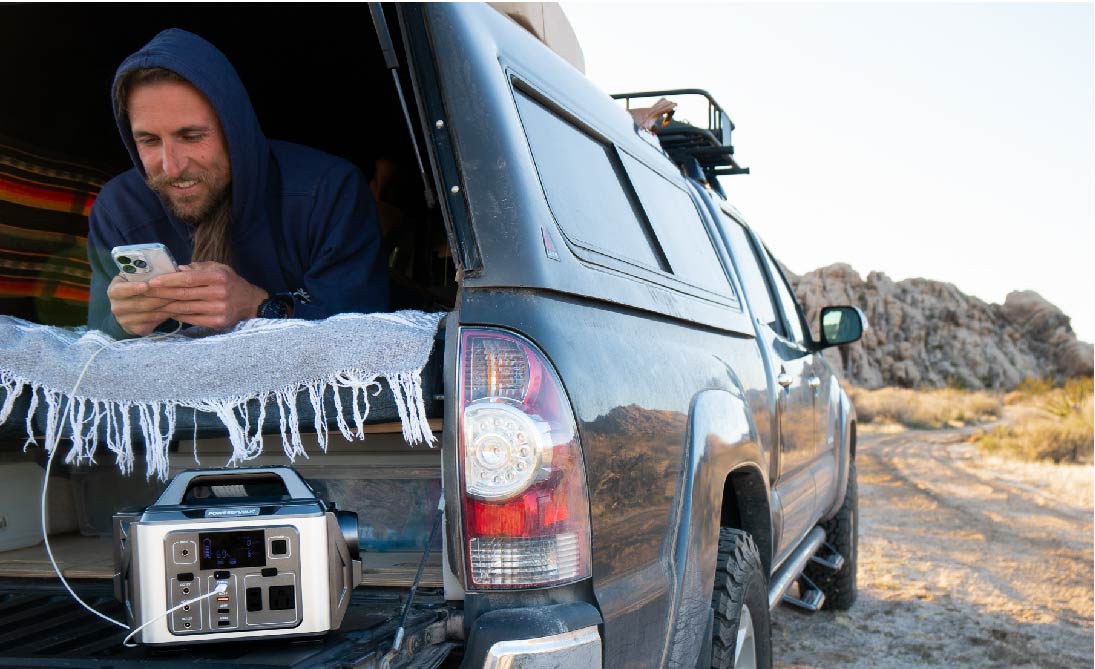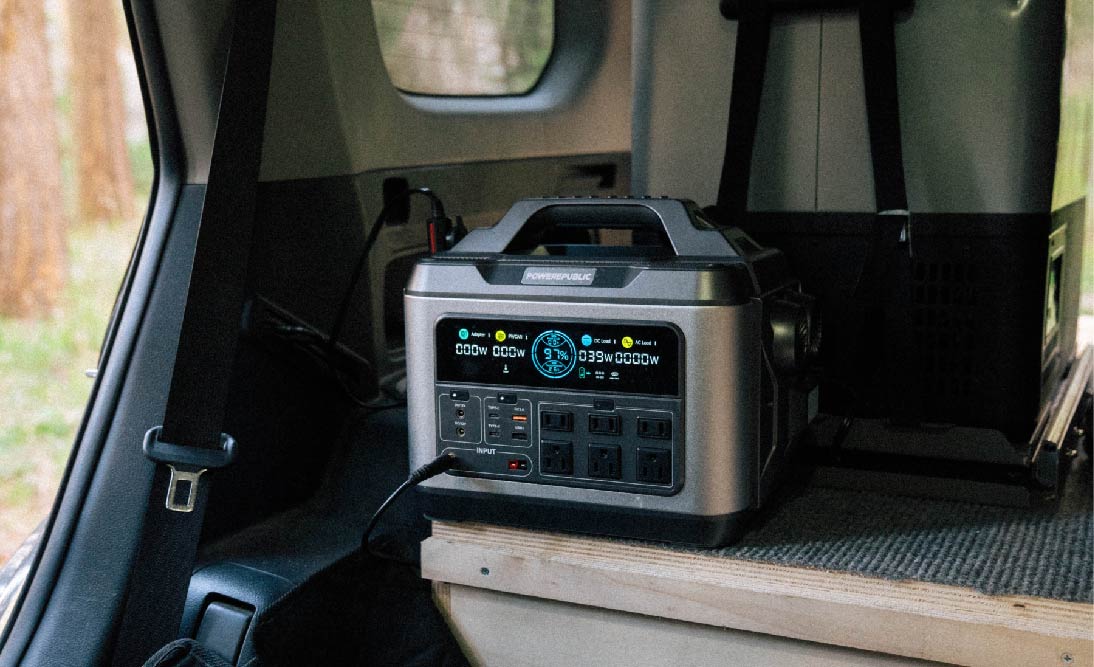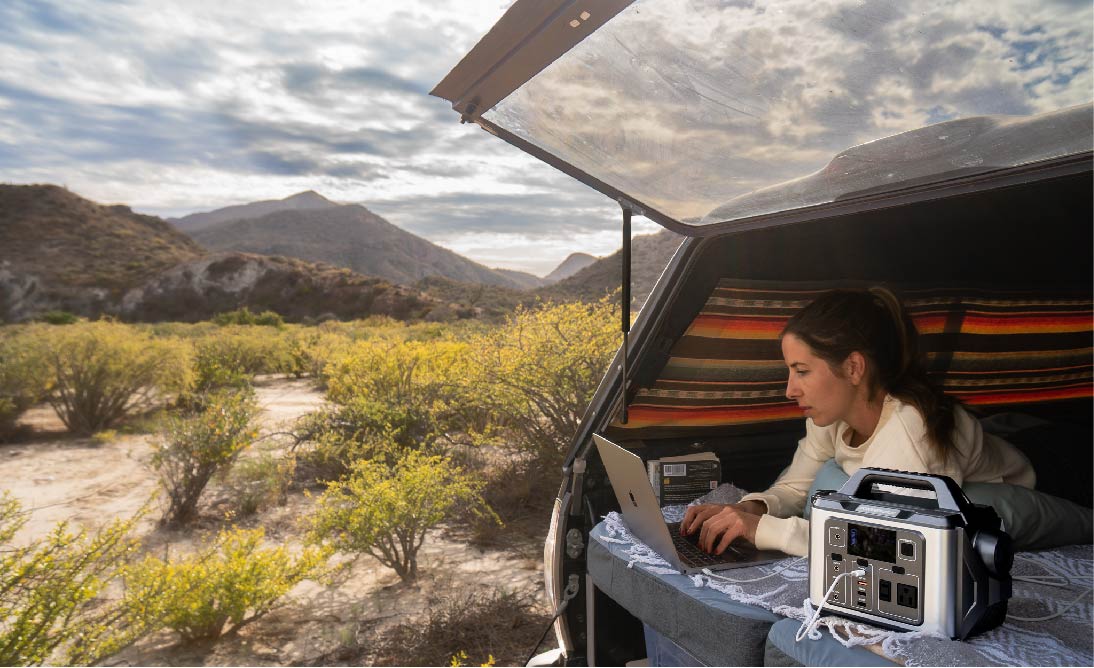Table of Contents:
-
How To Select the Ideal Battery Backup For Home Power Outages?
-
Can Portable Power Stations Act Like Battery Backup For Home Power Outages?
-
FAQ II: Is It Possible To Use a Portable Power Station To Power A House?
Battery backups for home power outages are becoming a go-to solution for households looking to safeguard against the inconvenience and potential hazards of power disruptions. These innovative systems, also known as home battery systems or backup power systems, are designed to offer an uninterrupted power supply, ensuring that life goes on as usual, even when the grid goes down. Ideal for areas prone to frequent power outages or for individuals who rely on continuous power for critical devices such as medical equipment, home offices, and more, these systems are an investment in peace of mind and security.
In this comprehensive guide, we'll delve into the advantages and drawbacks of battery backups for home power outages, guide you through selecting the perfect system for your specific needs, and spotlight two outstanding models from POWEREPUBLIC that stand out as exemplary choices in the market. Whether you're looking to enhance your home's resilience to power outages or seeking a reliable power solution, this article is your starting point for understanding and choosing the best battery backup for your home.
Battery Backup For Home Power Outages Overview
What Are They?
Battery backups for home power outages are systems designed to store electrical energy that can be used when the main power grid is down. These systems typically consist of one or more batteries connected to an inverter, which converts the stored direct current (DC) power from the batteries into alternating current (AC) power that can be used by household appliances and electronics.

Types of Batteries
-
Lead-Acid Batteries: Traditional and widely used due to their cost-effectiveness. They are heavier and have a shorter lifespan compared to other types.
-
Lithium-Ion Batteries: More modern and efficient, these batteries are lighter, have a longer lifespan, and a higher energy density but are more expensive.
-
Nickel-Cadmium Batteries: Less common for home use, known for their durability and ability to perform in extreme temperatures.
-
Flow Batteries: A newer type, these offer longer lifespans and are scalable but are currently more expensive and less common in residential settings.
How Do They Work?
A home battery backup system operates by charging its batteries when the main power grid is active. This can be done via the grid itself or through renewable energy sources like solar panels. When the power goes out, the system automatically switches to battery power. The inverter plays a crucial role here, converting the DC power from the batteries to AC power that can be used by home appliances.
Price Range
The cost of home battery backup systems varies significantly based on the battery type, the system's capacity, and additional features like integration with solar panels.
-
Basic Lead-Acid Systems: Prices may start around $1,000 to $3,000.
-
Mid-Range Lithium-Ion Systems: These can range from $5,000 to $15,000.
-
High-End Systems with Large Capacities or Advanced Features: Costs can exceed $20,000.
Examples and Calculations
For example, suppose you want to power critical items like a refrigerator, some lights, and a Wi-Fi router during an outage. If these collectively consume 1,000 watts and you want backup power for 12 hours, you would need a system that can provide at least 12 kWh (kilowatt-hours) of energy.
To calculate the required battery capacity, you use the formula:
Required Capacity(kWh)= Power Consumption(kW) * Desired Backup Time(hours)
So in this case, it would be:
1kW * 12 hours=12kWh
You would then choose a battery system that can provide at least this capacity. Note that it's always advisable to have a slightly higher capacity to account for inefficiencies and potential increases in power consumption.
Section Wrap-Up
Home battery backup systems provide a reliable solution for power outages, offering peace of mind and continuity in daily activities. The choice of system depends on individual power needs, budget, and preferences for maintenance and lifespan. As technology advances, these systems are becoming more efficient and affordable, making them a viable option for a growing number of households.
3 Types of Batteries: Which One to Choose?
When it comes to selecting the right battery for your battery backup for home power outages, understanding the different types available is crucial. Each type of battery offers unique benefits and drawbacks, and the right choice depends on your specific needs, budget, and preferences.

Let's dive into the three primary types of batteries used in battery backups for home power outages and determine which one might be the best fit for your home.
1. Lead-acid batteries
Lead-acid batteries are the traditional choice for a battery backup for home power outages. Their popularity stems from their cost-effectiveness and established reliability. These batteries are an excellent choice if you're looking for an economical solution and are not overly concerned about space or weight.
-
Pros: Affordable, widely available, and tried-and-tested technology.
-
Cons: Heavier and larger, shorter lifespan, and require more maintenance compared to newer battery technologies.
-
Ideal for: Those on a tight budget or who require a battery backup for home power outages on an infrequent basis.
2. Lithium-Ion Batteries
Lithium-ion batteries represent the more modern approach to battery backups for home power outages. They are renowned for their efficiency, longer lifespan, and higher energy density, which means they can store more power in a smaller package compared to lead-acid batteries.
-
Pros: Longer lifespan, higher efficiency, compact, and lighter weight. They also require less maintenance.
-
Cons: Higher upfront cost compared to lead-acid batteries.
-
Ideal for: Homeowners looking for a long-term, reliable solution for frequent power outages and those who have limited space for a battery system.
3. Nickel-Cadmium Batteries
Nickel-cadmium batteries are less common in residential settings but are known for their robustness, especially in extreme temperature conditions. They can be a great alternative for battery backups for home power outages, particularly in areas with harsh climates.
-
Pros: Durable, performs well in extreme temperatures, and has a long life cycle.
-
Cons: More expensive than lead-acid, contain toxic materials, and have memory effect issues (they may lose maximum energy capacity over time).
-
Ideal for: Those living in areas with extreme weather conditions and who need a reliable battery backup for home power outages under these circumstances.
Section Wrap-Up
Choosing the right battery for your battery backup for home power outages is a balancing act between cost, efficiency, lifespan, and specific home needs. Lead-acid batteries are suited for those who prioritize budget, lithium-ion batteries are ideal for efficiency and space-saving, and nickel-cadmium batteries cater to those in extreme environments. As technology continues to advance, homeowners have more options than ever to ensure their homes remain powered during outages, making battery backups for home power outages a smart and essential investment for modern living.
Pros and Cons Battery Backup For Home Power Outages
Battery Backup for Home Power Outages has emerged as a vital solution for maintaining electrical continuity during unexpected power disruptions. These systems ensure that households are not only protected from the inconvenience of a blackout but also keep critical devices running, which can be a matter of safety in some cases. However, like any technology, they come with their own set of advantages and drawbacks.

Let’s take a look at their advantages and disadvantages of them:
|
Pros of Battery Backup for Home Power Outages |
Cons of Battery Backup for Home Power Outages |
|
Uninterrupted Power Supply: Immediate power source during grid failures, ensuring essential appliances and devices continue operating. |
Initial Investment Cost: High upfront cost, which can be significant depending on system capacity and features. |
|
Increased Home Safety and Comfort: Crucial for households that rely on continuous power for medical equipment, home offices, or other essential devices. |
Maintenance and Lifespan: Varies by battery type; some may require more frequent maintenance and earlier replacement. |
|
Energy Independence: For homes with renewable energy sources, these systems can store excess energy, reducing grid dependence. |
Physical Space Requirements: Larger systems or those using older technologies might take up considerable space, a concern for smaller homes. |
|
Cost-Efficient in the Long Run: Potential savings over time, especially in areas with frequent power outages or high electricity rates. |
Complexity of Installation: Often requires professional installation, adding to the overall cost and effort. |
Section Wrap-Up
The decision to invest in a Battery Backup for Home Power Outages should be based on a careful consideration of these pros and cons. Each household's needs, budget, and space constraints are different, and these factors must be weighed to choose the most suitable system. As technology continues to advance, these systems are becoming more efficient and affordable, offering a feasible option for a growing number of households seeking resilience against power outages.
How To Select the Ideal Battery Backup For Home Power Outages?
Choosing the right Battery Backup for Home Power Outages can be a crucial decision for many households. The needs, budget, and space constraints vary significantly from one home to another, making it essential to consider several factors before making a purchase.
We'll walk you through the process of selecting the ideal battery backup system, complete with examples and calculations to aid your understanding.
1. Assessing Your Power Needs
The first step in selecting a Battery Backup for Home Power Outages is to determine your power needs. Consider which appliances and devices are essential during an outage. Commonly powered items include refrigerators, lights, Wi-Fi routers, and medical devices.
Example: Suppose your refrigerator uses 800 watts, a few lights use 200 watts, and your Wi-Fi router uses 100 watts. Your total power needed would be 1100 watts.
2. Calculating Backup Duration
Decide how long you need the backup power to last. This duration will significantly impact the size and cost of the system you choose.
Example: If you need the backup to last for 10 hours, and your total power need is 1100 watts, then the required capacity would be calculated as follows:
Required Capacity (kWh) = Power Consumption (kW) × Desired Backup Time (hours)
= 1.1 kW × 10 hours = 11 kWh
3. Considering Space and Location
Evaluate where the Battery Backup for Home Power Outages will be installed. Different systems have varying space requirements, and some may need a climate-controlled environment or protection from the elements.
Example: If you have limited space, a compact lithium-ion battery system would be more suitable than a bulkier lead-acid system.
4. Budgeting for Your Backup System
Budget is a key factor when choosing a Battery Backup for Home Power Outages. The cost can vary widely based on the type of battery, capacity, and additional features.
Example: A basic lead-acid system might start around $2,000, while a more advanced lithium-ion system could cost upwards of $10,000.
5. Understanding Battery Types
Different types of batteries offer various advantages and disadvantages:
-
Lead-Acid: More affordable but larger and with a shorter lifespan.
-
Lithium-Ion: Compact and longer-lasting but more expensive.
-
Nickel-Cadmium: Durable in extreme temperatures but less common and more costly.
6. Integration with Renewable Energy
Consider whether you want to integrate your system with renewable energy sources like solar panels. This can provide additional energy independence and savings in the long run.
7. Professional Installation and Maintenance
Factor in the cost of professional installation and ongoing maintenance. Some systems require more maintenance than others, which can affect long-term costs.

Section Wrap-Up
Selecting the ideal Battery Backup for Home Power Outages requires careful consideration of your power needs, budget, space constraints, and preferences for maintenance and lifespan. By assessing these factors and understanding the different types of batteries and systems available, you can make an informed decision that ensures your home remains powered during outages, providing peace of mind and security. Remember, as technology advances, options for battery backups are becoming more efficient and affordable, making them an increasingly practical choice for many homeowners.
Can Portable Power Stations Act Like Battery Backup For Home Power Outages?
Yes, they can!
From the discussion above, we know that selecting the best Battery Backup for Home Power Outages requires careful consideration of your power needs, budget, space constraints, and preferences for maintenance and lifespan. It is not an easy task for those of you who probably don’t have that much professional knowledge for selecting and installing.
So we would like to offer you another alternative battery backup for how power outages - Portable Power Stations. They present a user-friendly, versatile, and often more affordable option for emergency power needs at home. Also, they are versatile, portable, and suitable for various power needs.

Pros of Portable Power Stations
-
Portability: Easily movable and can be used in various locations, not just at home.
-
Ease of Use: Generally plug-and-play, requiring no complex installation or maintenance.
-
Flexibility: Useful in a variety of scenarios, from home power outages to outdoor activities.
-
Solar Charging Options: Many models can be charged with solar panels, enhancing energy independence.
Cons of Portable Power Stations
-
Limited Capacity: May not support high-energy-consuming appliances for extended periods.
-
Recharging Time: This needs to be recharged, which can be a challenge during prolonged outages without solar panels.
-
Cost Versus Capacity: Higher capacity models can be expensive.
Price Range
-
Basic Models: Around $300 to $1,000, suitable for powering small devices.
-
Mid-Range Models: Between $1,000 to $3,000, offering more power and features.
-
High-End Models: Can exceed $3,000, providing substantial power for multiple devices and appliances.
Factors to Consider
-
Power Requirements: Assess the wattage of essential devices. For example, if a refrigerator needs 800 watts, a laptop 60 watts, and lights 100 watts, a total of 960 watts is needed.
-
Backup Duration: Calculate the required capacity. For a 10-hour backup, with a total need of 960 watts, you would need 9.6 kWh (kilowatt-hours) of energy.
-
Physical Size and Weight: Consider if the unit needs to be moved frequently.
-
Charging Options: Look for models that can be charged via solar panels for extended use during long outages.
How To Choose the Ideal Portable Power Stations?
Selecting the ideal portable power station for home power outages involves a series of steps to ensure you get a device that meets your specific needs. Here's a guide on how to do this, with examples and calculations:
1. Assess Your Power Needs
-
List Essential Devices: Identify the appliances and devices you need to power during an outage (e.g., refrigerator, laptop, lights, phone chargers).
-
Calculate Total Wattage: Determine the wattage of each device. For instance, a refrigerator might need 800 watts, a laptop 60 watts, and lights 100 watts.
-
Example Calculation: Total wattage = 800W (refrigerator) + 60W (laptop) + 100W (lights) = 960 watts.
2. Determine Backup Duration
-
Estimate Usage Time: Decide how long you need to run these devices. Let's say you want a backup for 10 hours.
-
Calculate Required Capacity: Multiply total wattage by the number of hours.
-
Example Calculation: Required capacity = 960 watts * 10 hours = 9.6 kWh.
3. Consider Physical Attributes
-
Size and Weight: If you plan to move the unit frequently or use it for outdoor activities, opt for a lighter, more compact model.
-
Portability Features: Look for features like handles or wheels for easier transportation.
4. Check Charging Options
-
Solar Compatibility: For prolonged outages, a model that can be charged with solar panels is advantageous.
-
Charging Time: Understand how long it takes to charge the power station fully.
5. Evaluate Additional Features
-
Number and Type of Outlets: Ensure it has the right type and number of outlets for your devices (USB, AC, DC).
-
Display and Controls: Look for a user-friendly interface to monitor power usage and status.
6. Set a Budget
-
Price Range Consideration: Based on the required capacity, determine your budget. Remember, higher capacity usually means a higher price.
7. Research and Compare Models
-
Read Reviews: Look for user and professional reviews to gauge reliability and performance.
-
Brand Reputation: Consider brands known for quality and customer service.
8. Warranty and Support
-
Check Warranty: Opt for a product with a good warranty period and favorable terms.
-
Customer Support: Ensure that the brand offers solid customer support for troubleshooting and assistance.
Example Scenario
-
Power Needs: Refrigerator (800W), Laptop (60W), Lights (100W) for 10 hours.
-
Capacity Required: 9.6 kWh.
-
Budget: Up to $2,000.
-
Model Selection: Look for a portable power station with at least 10 kWh capacity, solar charging capability, and multiple outlets. Check models within the $1,000 to $2,000 range.
By following these steps, you can select a portable power station that suits your needs during power outages, ensuring that you have a reliable backup power source.

Section Wrap-Up
While Portable Power Stations may not completely replace a full-scale Battery Backup for Home Power Outages, they offer a viable alternative, especially for less demanding power needs or where ease of use and portability are priorities. Their growing capabilities and decreasing costs make them an increasingly attractive option for many homeowners seeking backup power solutions.
Battery Backup For Home Power Outages: POWEREPUBLIC Models
From the information above, we know that while portable power stations may not completely replace a full-scale battery backup system for home power outages, they offer a viable alternative, especially for less demanding power needs or when ease of use and portability are priorities. Therefore, they are an attractive option for many homeowners seeking a compact and convenient backup power solution.

If you are in search of such an option, we recommend the POWEREPUBLIC T2200 and T3000 portable power stations. Both are powerful and versatile, capable of charging almost all home appliances during power outages. Let’s explore more about them using the table below:
|
Feature/Model |
||
|
Capacity |
2240Wh/100,000mAh |
3200Wh/125,000mAh |
|
Continous Power |
2200W |
3000W |
|
Peak Power |
4500W |
6000W |
|
Battery |
LiFePO4 |
LiFePO4 |
|
Output Ports |
15 Output Ports - 6*AC, 3*USB, 1*QC3.0, 2*Type C, 2*DC/12V, 1*Car Port |
15 Output Ports - 6*AC, 3*USB, 1*QC3.0, 2*Type C, 2*DC/12V, 1*Car Port |
|
Charging Methods |
AC Adapter, Solar Panel, Car Charger |
AC Adapter, Solar Panel, Car Charger |
|
Solar Input |
230W Compatible with POWEREPUBLIC Portable Solar Panels |
230W Compatible with POWEREPUBLIC Portable Solar Panels |
|
Additional Features |
LDC Screen/Aluminum-alloy Body/LED Light |
LDC Screen/Aluminum-alloy Body/LED Light |
|
Weight |
64Ibs/30Kg |
88Ibs/40Kg |
|
Dimensions |
18.3*11.8*12.2 inch |
18.3*11.8*14.5 inch |
|
Est.Operation Time(h) |
Est.Operation Time(h)=Capacity(Wh) * 0.85 / The power of the item(W) |
|
|
Television (100-300W) |
6 to 19 hours |
9 to 27 hours |
|
Coffee Maker (600-1200W) |
1.5 to 3 hours |
2 to 4 hours |
|
Refrigerator (150-800W) |
2 to 12.5 hours |
3.5 to 18 hours |
|
Microwave (1000W) |
2 hours |
2.5 hours |
|
Washing Machine (500-1500W) |
1.3 to 3.5 hours |
1.5 to 5.5 hours |
|
Air Conditioner (1000-3000W) |
1000W - 2000W: 1 to 2 hours 3000W: Not Applicable |
1 to 2.5 hours |
|
Electric Oven (1000-3000W) |
1000W - 2000W: 1 to 2 hours 3000W: Not Applicable |
1 to 2.5 hours |
|
Portable Heater (1500-3000W) |
1500W - 2000W: 0.5 to 2 hours 3000W: Not Applicable |
1 to 1.8 hours |
Note That:
-
The estimated running time assumes the operation of only one device at a time with the power station at full charge. Keep in mind that power usage may differ across different brands.
-
It's essential to confirm the continuous and peak power needs of your devices. Make sure that the total power requirement, including both operational and startup power, doesn't exceed the output limit of your power station.
-
For additional details on POWEREPUBLIC Portable Power Stations, visit our Comparison Page.
FAQ I: What’s the Lifespan of the Battery?
The lifespan of a battery in portable power stations like those from POWEREPUBLIC primarily depends on the battery type and how it's used. For instance, the POWEREPUBLIC T2200 and T3000 models use LiFePO4 batteries. These batteries typically have a longer lifespan than traditional lead-acid or standard lithium-ion batteries. On average, a LiFePO4 battery can last between 2000 to 5000 charge cycles.

For example, if you discharge and then recharge your power station once a week, the battery could last approximately 38 to 96 years. However, this is an ideal scenario, and real-life factors like partial discharges, ambient temperature, and maintenance play a significant role in actual battery lifespan.
FAQ II: Is It Possible To Use a Portable Power Station to Power a House?
Yes, it is possible to use a portable power station to power a house, especially for essential appliances and devices during a power outage. However, the extent to which a portable power station can power a house depends on the station's capacity and the power requirements of the house.

For example, the POWEREPUBLIC T3000, with a continuous power output of 3000W and a capacity of 3200Wh, could potentially run a refrigerator (800W), a Wi-Fi router (20W), several LED lights (40W total), and a laptop (60W) simultaneously for about 3-4 hours. However, it may not be feasible to power an entire house with high-energy appliances like central air conditioning or an electric furnace for an extended period.
FAQ III: What’s the Lifespan of Portable Power Stations?
The lifespan of portable power stations depends on several factors: the quality of their components, battery type, usage patterns, and how well they are maintained. For models like the POWEREPUBLIC T2200 and T3000, which use LiFePO4 batteries, the expected lifespan can be quite long, potentially lasting several years.

The battery is often the limiting factor in a power station's lifespan. As mentioned earlier, LiFePO4 batteries can last for 2000 to 5000 cycles. Assuming you fully deplete and recharge the power station once a week, it could last for decades. However, other components, such as the inverter and electronic circuits, might have shorter lifespans. With proper care and moderate use, you can expect a high-quality portable power station to last for many years, providing reliable backup power for your home.
Final Thoughts
In conclusion, Battery Backup for Home Power Outages offers a dependable and increasingly essential solution for maintaining electrical continuity in our homes. Whether it's for daily necessities or emergencies, these systems ensure that we are well-prepared for unexpected power disruptions. From traditional lead-acid to modern lithium-ion batteries, each type offers unique benefits, catering to diverse needs and preferences.
Additionally, the advent of Portable Power Stations, like those from POWEREPUBLIC, presents a flexible, user-friendly alternative, especially valuable for less demanding power needs or where portability is key. By carefully considering factors like power needs, budget, and space constraints, homeowners can make informed decisions, ensuring their homes remain powered and secure during outages. As technology advances, options like the POWEREPUBLIC T2200 and T3000 are becoming more efficient and affordable, making Battery Backup for Home Power Outages a smart investment for a resilient and comfortable home life.
Explore More about POWEREPUBLIC Portable Power Station for Home Power Outages.
